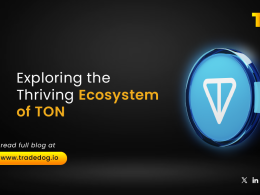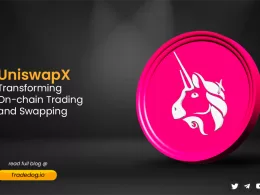Quick Links
The SocialFi market is booming, with a total market capitalization of over $5.8 billion. Theta Network, with a market cap of over $2 billion, leads the pack, followed by Cheelee and Galxe. These platforms offer innovative ways for users to own and monetize their social data, but they suffer from limitations.
Existing SocialFi platforms built on blockchains like Ethereum struggle with scalability. High transaction fees and slow processing times create a clunky user experience, similar to Web2 platforms. This deters mainstream users accustomed to the seamless experience of centralized social media applications. This is where Lens Network comes in. Built on zkSync’s ZK Stack, Lens Network promises to revolutionize SocialFi by offering a scalable, secure, and user-friendly platform for decentralized social experiences.
Lens Network
Lens Network is a next-generation social networking infrastructure built on Matter lab’s ZK Stack. It aims to create a more open and fair social media landscape by addressing the limitations of traditional web2 platforms and existing blockchain-based solutions. Lens leverages the power of decentralization to empower users with ownership of their data and social capital, while simultaneously fostering a vibrant and scalable ecosystem for developers and creators. This “liquid citizenship” allows them to freely move their social media presence across applications built on the Lens Network.
Lens Network’s architecture leverages several cutting-edge technologies:
- ZK Stack: This modular framework offers scalability and security benefits by utilizing zero-knowledge proofs. ZK proofs allow verification of transactions without revealing all underlying data, ensuring privacy and efficiency.
- Validium: Validiums leverage zero-knowledge proofs (ZKPs) for secure and efficient transaction processing. Unlike traditional blockchains, they store transaction data off-chain in a separate data availability (DA) layer. This significantly reduces costs but introduces trust in a DA provider for data accessibility. Validiums excel in high-throughput applications (social media, gaming) where speed and cost are crucial.
- Volition: Volitions combine ZK rollups and Validiums. Users choose between on-chain (ZK rollup-like) or off-chain (Validium-like) data availability for individual transactions, optimizing for cost and security. This flexibility caters to complex applications (decentralized social networks, finance) requiring a balance between security and scalability for different transaction types.
Lens Network will initially launch as an EVM-compatible Validium chain in a three-phased rollout strategy, each phase designed to optimize scalability, security, and user experience.
- Phase 1: Seed – Validium on Ethereum
In the initial phase, Lens Network launches as a Validium storing data off chain in a separate data availability (DA) layer. This ensures data integrity while keeping transaction costs low, making it ideal for social interactions.
- Phase 2: Grow – Introducing the DA Provider
Phase two introduces separate Validium chains for public and private interactions to support privacy use cases.
- Phase 3: Bloom – Full Circle with Volition
The final phase introduces Volition, a technology that combines Validium and ZK rollups.
What Makes Lens Network Different?
Lens Network differentiates itself from existing SocialFi platforms in several key aspects:
- Scalability: By leveraging zkSync’s ZK Stack, Lens Network achieves significantly faster transaction throughput compared to traditional blockchains. This is crucial for supporting a large user base and enabling seamless social interactions.
- Security: Lens Network inherits the robust security of the Ethereum blockchain, ensuring the integrity of user data and social graphs. Additionally, the phased rollout strategy incorporates various security measures like Validium and ZK rollups to cater to different use case requirements.
- Decentralization and User Ownership: Unlike centralized platforms, Lens Network empowers users with complete control over their data and social graph.
- User Experience: Lens Network prioritizes a smooth user experience on par with web2 applications. It features gasless and signless transactions, seamless bridging across networks making it user-friendly and accessible to mainstream audiences.
- Openness and Interoperability: Lens Network will operate as a cross-chain hub, allowing developers to build social applications on various EVM and non-EVM networks. This fosters interoperability and facilitates the connection of the Lens user base across different platforms.
Lens Network Effects
Lens Network isn’t starting from scratch. The existing Lens Protocol on Ethereum boasts a thriving community with over 353,000 user profiles, 6 million posts published, and over 77,000 active users just last month. This strong foundation translates into a significant network effect, where the existing user base fuels the growth and success of Lens Network.
Unlike current SocialFi platforms, Lens Network aims to empower creators with greater control over their content and explore direct monetization options through native tokens. This could foster a fairer revenue distribution model compared to traditional platforms, where creators often receive a smaller share of the profits. Lens Network’s decentralized nature has the potential to safeguard against censorship and promote free expression, although complete censorship resistance might be challenging to achieve. Furthermore, Lens Protocol’s open and interoperable ecosystem empowers developers to build innovative social applications, paving the way for a rich and diverse social networking experience.
Challenges and Considerations
While Lens Network presents a promising vision for the future of SocialFi, there are still challenges to consider:
- User Adoption: Migrating users from familiar web2 platforms to a decentralized alternative requires significant effort. Building a user-friendly ecosystem with engaging applications and intuitive interfaces will be crucial for attracting and retaining mainstream users.
- Regulation: The rapidly evolving SocialFi space presents regulatory uncertainties. As Lens Network gains traction, it may face regulatory scrutiny related to data privacy, content moderation, and potential financial activities.
- Decentralization vs. Scalability: Striking a balance between decentralization and scalability remains a challenge. While ZK Stack offers significant improvements, achieving true mass adoption might necessitate further advancements in scalability solutions.
Conclusion
Lens Network, built on the innovative ZK Stack, presents a compelling vision for the future of SocialFi. Its focus on scalability, security, and user experience has the potential to revolutionize how we interact and participate in online communities. By empowering users, promoting innovation, and fostering a more secure environment, Lens Network could play a pivotal role in ushering in a new era of decentralized social media.









